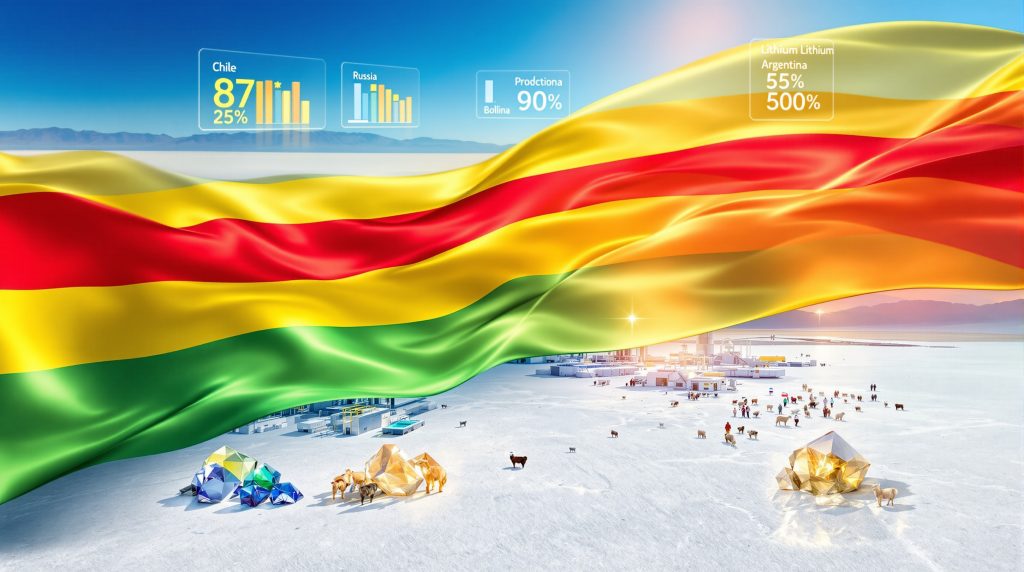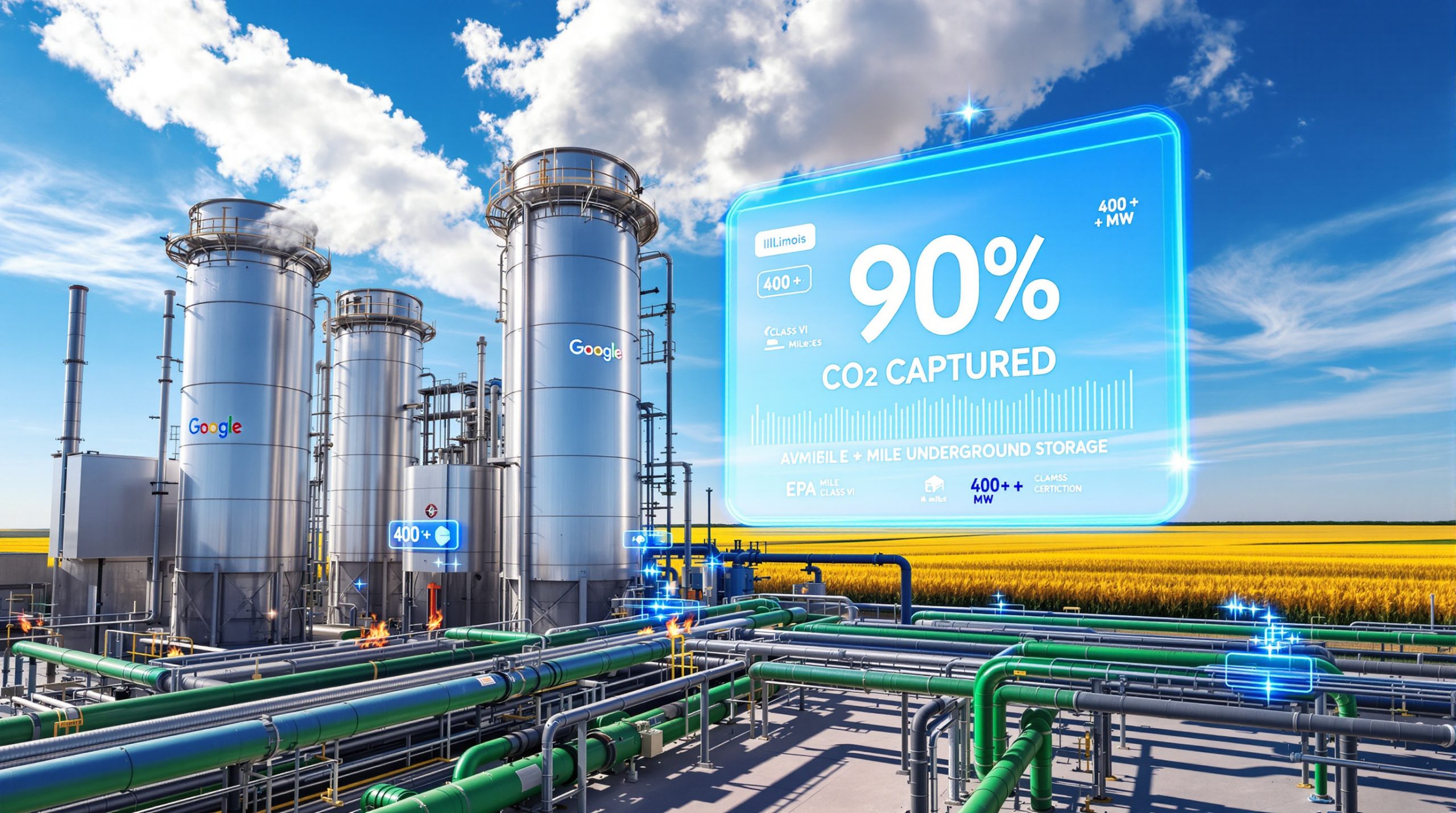Bolivia's lithium development prospects have entered a pivotal phase following significant political changes that could reshape the country's approach to foreign investment and resource extraction. The South American nation holds approximately 23 million metric tons of lithium resources, representing roughly half of the world's known reserves, yet production remains minimal compared to regional competitors.
The country's vast Salar de Uyuni salt flat contains lithium deposits sufficient to supply global electric vehicle production for decades at current consumption levels. However, Bolivia lithium development has been constrained by constitutional requirements mandating state control over extraction activities, creating barriers that have deterred international investment despite massive resource potential.
Political volatility has historically disrupted project continuity, with frequent government changes creating regulatory uncertainty that complicates long-term development planning. Recent legislative shifts toward more centrist and right-wing representation could accelerate investor-friendly regulations, provided political infighting does not prevail.
Constitutional Constraints and Investment Framework Challenges
Bolivia's constitutional framework presents unique obstacles for Bolivia lithium development initiatives. Current laws dictate that only state entities can extract lithium, requiring foreign companies to accept minority partnership roles that limit operational control and profit participation.
Modifying these constitutional provisions would require either referendum approval or comprehensive constitutional reform processes. Such changes represent significant political undertakings that could face resistance from groups viewing resource control as fundamental to national sovereignty.
Furthermore, Bolivia's new president rekindles cautious hope for long-stalled lithium dreams, suggesting potential policy shifts that could influence investment frameworks. The legal framework has created a challenging investment environment where companies must navigate:
• Mandatory state partnerships limiting foreign ownership stakes
• Complex consultation requirements with indigenous communities
• Constitutional restrictions on resource extraction methods
• Political risk from potential policy reversals
These constraints have contributed to Bolivia's delayed entry into commercial lithium production despite holding the world's largest reserves. International mining companies have expressed reluctance to commit substantial capital under current regulatory conditions.
Technical Extraction Complexities in Bolivian Salt Flats
The unique geological composition of Bolivia's salt deposits presents significant technical challenges that differ from extraction operations in neighbouring countries. High magnesium concentrations in brine deposits make traditional evaporation pond methods inefficient, requiring specialised direct lithium extraction (DLE) technologies.
| Technical Challenge | Impact on Operations | Required Solutions |
|---|---|---|
| High magnesium content | Reduced lithium recovery rates | Advanced DLE technology |
| Complex brine chemistry | Extended processing times | Customised extraction methods |
| Altitude effects | Equipment performance issues | Specialised machinery |
| Water scarcity | Limited processing capacity | Water recycling systems |
Traditional evaporation methods that prove successful in Chile's Atacama Desert or Argentina's lithium triangle require significant modification for Bolivian conditions. The magnesium-rich brines create technical complications that increase operational costs and extend development timelines.
State-run lithium company YLB opened its first processing facility in late 2023, achieving production of 2,000 metric tons in 2024 with revenues of $15.6 million. This output represents less than 1% of Chile's annual production of approximately 300,000 tons, highlighting the scale gap between Bolivia's current capabilities and commercial requirements.
In addition, the challenges facing Bolivia are similar to broader lithium brine extraction developments worldwide, where technical innovations are crucial for commercial viability.
Current Production Capabilities and Scale Limitations
Bolivia's lithium production infrastructure remains in early development stages despite decades of exploration and planning. YLB's operational facility represents the country's first commercial-scale attempt at lithium extraction, though output levels fall significantly short of regional competitors.
Comparative Regional Production Analysis
Production comparisons reveal the extent of Bolivia's development gap relative to established lithium producers:
| Country | 2024 Production (MT) | Global Market Share | Primary Technology |
|---|---|---|---|
| Chile | 300,000 | ~40% | Evaporation ponds |
| Argentina | 70,000 | ~9% | Evaporation ponds |
| Bolivia | 2,000 | <1% | Limited DLE pilot |
The production disparity reflects both technological challenges and investment limitations that have constrained Bolivia lithium development. While Chile and Argentina benefit from decades of operational experience and established infrastructure, Bolivia continues working to optimise extraction methods suited to its unique brine composition.
Recent investments focus on advanced extraction technologies designed to address high-magnesium content challenges. Pilot programmes with international technology providers aim to improve recovery rates while minimising environmental impacts on surrounding ecosystems.
Infrastructure Development Requirements
Scaling production to commercial levels would require substantial infrastructure investments including:
• Processing plant expansion to handle increased throughput
• Transportation networks connecting remote salt flats to export facilities
• Power generation capacity for energy-intensive extraction processes
• Water management systems addressing scarcity concerns
• Technical workforce development for specialised operations
Industry experts estimate Bolivia could achieve commercial-scale production within 5-7 years under favourable political and technical conditions, provided sustained government support and successful technology deployment occur.
International Competition for Bolivian Resources
Global demand for lithium has intensified competition among international players seeking to secure upstream supply sources. Bolivia's massive reserves have attracted interest from companies representing different geopolitical spheres, each offering distinct partnership approaches.
Chinese Strategic Investments
China's CATL subsidiary CBC secured development agreements targeting annual production capacity of 90,000 metric tons, representing a $1.03 billion investment commitment. This partnership reflects China's strategic emphasis on securing lithium supplies for its dominant battery manufacturing sector.
Chinese involvement extends beyond extraction to include potential downstream processing capabilities that could add value to Bolivian lithium production. However, these agreements face scrutiny from new political leadership regarding contract transparency and benefit distribution.
Russian Partnership Initiatives
Russia's Uranium One Group committed $970 million toward lithium carbonate facility construction as part of Rosatom's broader critical minerals diversification strategy. Russian involvement represents an attempt to establish alternative supply chains independent of Western-controlled resources.
The Rosatom partnership includes technical expertise transfer and potential integration with Russia's nuclear energy infrastructure development plans. However, geopolitical tensions could complicate long-term cooperation under changing political conditions.
Western Investment Opportunities
United States and European companies are exploring renewed engagement opportunities under Bolivia's evolving political landscape. Geopolitical tensions have increased Western focus on supply chain security for energy transition materials.
Investment Consideration: Recent US government statements indicate renewed interest in bilateral partnerships, particularly as the Trump administration attempts to counter Chinese dominance in critical mineral sectors.
Smaller technology-focused companies may find opportunities to prove extraction innovations in Bolivia's challenging geological conditions, while larger corporations could pursue comprehensive development partnerships despite regulatory uncertainties.
Furthermore, India's lithium strategy demonstrates how emerging economies are actively seeking partnerships to secure critical mineral supplies for their energy transition goals.
Environmental and Community Relationship Dynamics
Bolivia lithium development projects must navigate complex environmental and social considerations that influence project feasibility and community acceptance. Water resource management represents a critical concern in regions where agricultural communities depend on limited groundwater supplies.
Indigenous Rights and Consultation Requirements
Bolivia's plurinational constitution mandates meaningful consultation with indigenous communities before resource extraction projects proceed. These requirements create additional timeline and cost considerations while ensuring community voices are incorporated into development planning.
Traditional farming and livestock activities depend on water resources that lithium extraction could potentially impact. However, Bolivian communities push back against foreign-backed lithium projects, highlighting the complex social dynamics surrounding resource development.
Community opposition has emerged from concerns about environmental degradation and disruption of ancestral territorial uses. Successful project development requires:
• Comprehensive environmental impact assessments addressing water usage
• Community benefit-sharing agreements ensuring local economic participation
• Cultural heritage protection measures preserving sacred sites
• Ongoing consultation processes maintaining community engagement
Sustainable Extraction Technology Development
Direct Lithium Extraction (DLE) methods offer potential solutions to environmental concerns by reducing water consumption and processing time compared to traditional evaporation pond systems. These technologies could address community concerns while improving commercial viability.
Modern extraction methods being piloted in Bolivia aim to minimise environmental footprints while maximising resource recovery efficiency. Success with these technologies could provide models for sustainable lithium development in other challenging geological environments.
Water recycling systems and closed-loop processing could significantly reduce freshwater requirements, addressing primary community concerns about resource competition between industrial and agricultural uses.
Global Reserve Distribution and Strategic Importance
Bolivia's lithium reserves represent a critical component of global supply security as electric vehicle adoption accelerates worldwide. The concentration of reserves in South America's lithium triangle creates both opportunities and vulnerabilities for global battery supply chains.
Comparative Global Reserve Analysis
| Country/Region | Reserves (Million Tons) | Development Status | Key Advantages |
|---|---|---|---|
| Bolivia | 23.0 | Early development | Largest reserves, high grade |
| Chile | 9.3 | Leading producer | Established infrastructure |
| Argentina | 2.7 | Rapid expansion | Favourable investment climate |
| Australia | 2.4 | Major producer | Stable regulatory environment |
Bolivia's undeveloped reserves could significantly impact global lithium pricing and supply chain resilience once production reaches commercial scales. The country's resource base exceeds the combined reserves of most other producing nations.
Strategic Mineral Security Implications
Successful Bolivia lithium development could reshape global supply dynamics by reducing dependence on current producing regions. This diversification would enhance supply security for battery manufacturers and electric vehicle producers worldwide.
The geopolitical importance of Bolivia's reserves has increased as countries recognise lithium's critical role in energy transition strategies. Competition between Chinese, Russian, and Western interests reflects broader tensions over critical material access and supply chain control.
Consequently, this aligns with broader critical minerals transition initiatives worldwide, where securing diverse supply sources has become essential for energy security.
Investment Risk Assessment and Market Entry Strategies
Bolivia lithium development presents both significant opportunities and substantial risks that require careful evaluation by potential investors. Contract cancellation precedents under previous administrations create uncertainty about long-term investment security.
Risk Factors Analysis
Key risks facing potential investors include:
• Political volatility affecting contract stability
• Regulatory uncertainty regarding foreign investment rules
• Technical challenges requiring specialised extraction methods
• Community opposition potentially delaying project approvals
• Infrastructure limitations increasing development costs
Additionally, the broader lithium market downturn has created challenging conditions for new project development, affecting investment appetite and project economics.
Market Entry Approaches
Different company types may pursue varying strategies for engaging with Bolivia's lithium sector:
Technology-Focused Companies: Smaller firms could focus on proving extraction innovations in Bolivia's unique geological conditions, potentially securing technology licensing agreements or joint development partnerships.
Major Mining Corporations: Larger companies with substantial risk tolerance might pursue comprehensive development partnerships with state entities, accepting minority stakes in exchange for operational management roles.
Financial Investors: Investment funds could provide financing for technology development or infrastructure construction while limiting direct operational exposure to political and technical risks.
Due Diligence Considerations
Investors evaluating Bolivia lithium development opportunities should assess:
• Regulatory stability under current and future political leadership
• Technical feasibility of proposed extraction methods
• Community relations and environmental compliance requirements
• Infrastructure development needs and associated costs
• Market access and transportation logistics
Future Development Timeline and Production Scaling
Bolivia lithium development faces a complex pathway toward commercial production that depends on resolving political, technical, and social challenges simultaneously. Industry analysts project potential commercial-scale production within 5-7 years under favourable conditions.
What Are the Critical Development Milestones?
Key achievements necessary for successful scaling include:
- Political stability maintaining consistent regulatory frameworks
- Technology optimisation proving efficient extraction methods
- Community agreements securing social licence for operations
- Infrastructure construction enabling transportation and processing
- International partnerships providing financing and market access
Meeting this timeline requires sustained government support, successful technology deployment, and resolution of community concerns. Delays in any component could extend development schedules significantly.
Production Scaling Potential
Bolivia could theoretically increase production capacity to meet growing electric vehicle battery demand within the next decade, provided technical challenges are resolved and stable regulatory frameworks are established.
Successful development could position Bolivia as a major supplier to electric vehicle manufacturers worldwide, potentially supporting domestic battery production capabilities and value-added processing industries.
The country's massive resource base offers sufficient lithium to supply global markets for decades, making successful development highly valuable for both Bolivia and international partners willing to navigate current challenges.
Integration with Global Supply Chains
Commercial-scale Bolivia lithium development would significantly influence global battery material pricing and supply chain dynamics. The additional production capacity could help stabilise lithium markets during periods of high demand growth.
Integration challenges include establishing quality standards, securing transportation logistics, and developing processing capabilities that meet international battery manufacturer specifications. Success would require coordination between government entities, international partners, and downstream users.
For instance, the broader mining industry evolution emphasises technological innovation and sustainable practices that could benefit Bolivia's development approach.
This analysis reflects information available as of late 2024. Political developments, technological advances, and market conditions may significantly impact future outcomes for Bolivia lithium development initiatives. Investors should conduct comprehensive due diligence and seek professional advice before making investment decisions related to Bolivian lithium projects.
Looking to Invest in Critical Minerals and Battery Materials?
Discovery Alert's proprietary Discovery IQ model delivers real-time notifications on significant ASX mineral discoveries, including critical battery materials and strategic mineral opportunities that could benefit from global supply chain developments like Bolivia's lithium sector. Understand why major mineral discoveries can lead to substantial market returns by exploring Discovery Alert's dedicated discoveries page, showcasing historic examples of exceptional outcomes, then begin your 30-day free trial today to position yourself ahead of the market.




